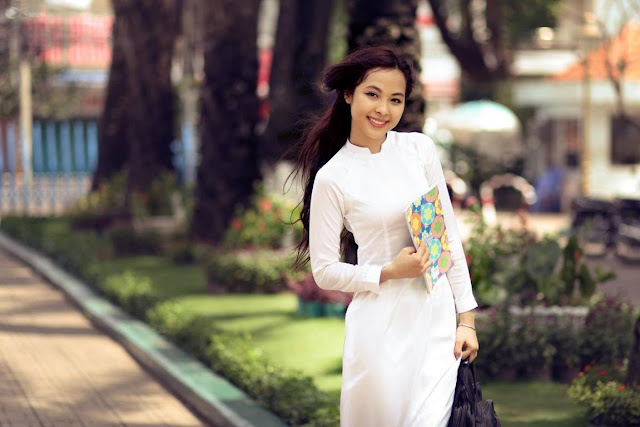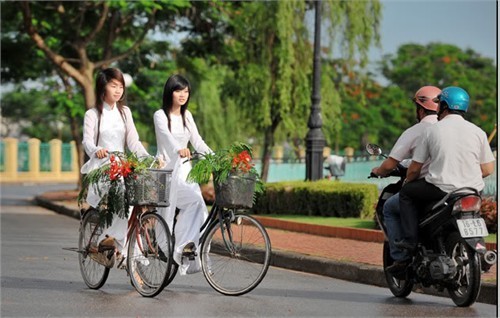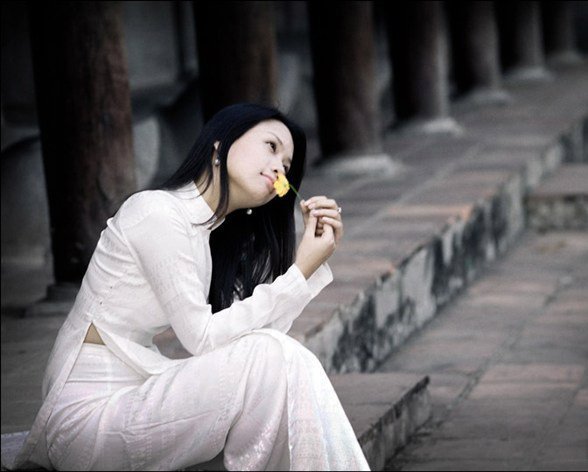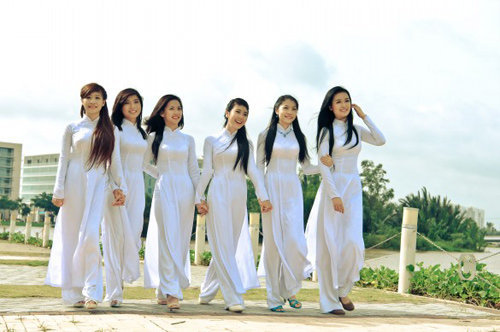Ao dai 2
Who has yet to determine the exact origin of the dresses have worked closely with the Vietnamese woman from time to time. According to archaeologists, the image of the two dresses to euphoria in that wind has been found in the image engraved on the antiquities as the Ngoc Lu drum, Peace, Royal House, the Dao Thinh tower on about three thousand years ago. According to the legend, Hai Ba Trung was wearing a two false gold armor, cover the golden elephant battle. Later, due respect should Hai Ba Vietnamese women avoid wearing two us and instead jacket from the body.
However, the story is best known as the Lord Nguyen Phuc Khoat in hand, proclaimed King (1744), people must wear dress uniform sampling from the "contrite map" of the Ming Dynasty, China. So the theory that, Ao Dai Vietnam came from the north.
Until the early twentieth century, most urban women wear Ao Dai are unfortunately the body. Each body front and back of two evil, stitched together along the life jacket. Add to that the wrong things right, in the front. Sewing sleeves below the elbow connector. The reason is to connect the body and sleeves for fine fabrics such as silk, sa, brocade, ... ancient textiles is the largest 40 cm. Neck, arms and upper body usually tight, then dress & wide from side to bear and not extract the waist. Bear shirt hammock, tie very wide, an average of 80 cm in bear, high collar only about 2-3 cm.
In the decade from 1930 to 1940, sewing dresses have not changed much, but urban women began to use bright colored fabrics, brighter, imported from Europe. This period, bears the dresses are made of the ankle approximately 20 cm. From here and continue until near the end of the twentieth century girl all dressed in white Ao Dai. Black pants for women who are married. A few designer dresses began to appear, but they just leave the connection between Austrian life because of the West-woven fabric width than we. Sleeve may still connected. At that time, Hanoi was known as Lisianthus plants in Hang Da and some in the region Hang Trong, Hang Bong. In 1939, fashion designer Cat Tuong has launched a new Austrian style known as Le Mur identified by the patterns of very European. Austria Le Mur remained part Dresses &, not connect live below, but the carved heart-shaped collar; sometimes be fitted with more girls and a bow at the front of the neck; shoulder cotton garment, connected at the shoulder ; sewing buttons Austria along the shoulder and the right side. So Austria Le Mur is considered bold and artists only or dissipated "fashionable" then dare to wear. But only to about 1943, this shirt has been forgotten.
Until about the 1950s, began sewing dresses discount rib waist. The & then cut the eel body. My shirt after wider than the front, especially the buttocks to the shirt Slim body shape without extraction waist; lap narrower cut, high collar up while the bear is lowered.
In the 1960s, most change dresses because of the bra is used more and more popular, must be extracted up waist dresses, even a woman wearing very tight to respect the chest. High waist dress cut up to open the waistband; bear shirt cut long straight and close to the ankle, round collar cut.
Semoga artikel Ao dai 2 bermanfaat bagi Anda.
























Post a Comment